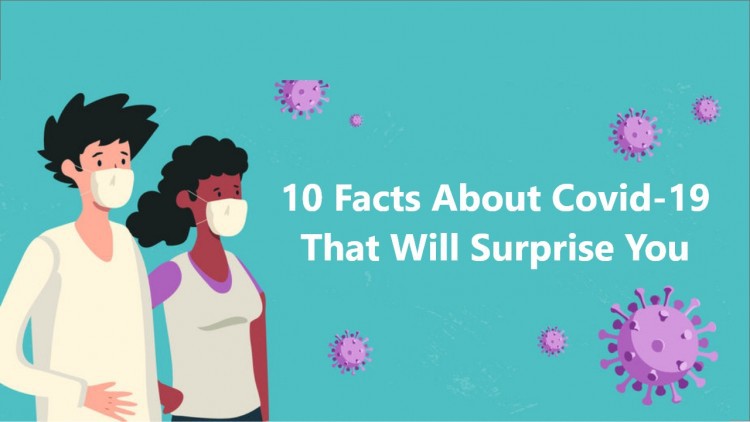View more details on YouTube: https://youtu.be/5X03PbJMYKE
At the end of December, public health officials from China informed the World Health Organization that they had a problem: an unknown, new virus was causing pneumonia-like illness in the city of Wuhan. They quickly determined that it was a coronavirus and that it was rapidly spreading through and outside of Wuhan.
As of May 26, more than 346,000 people worldwide have died of COVID-19, the highly infectious respiratory disease caused by the coronavirus.
The number of people who have tested positive for COVID-19 is 5.5 million, according to data compiled by Johns Hopkins University. More than 2.2 million people have recovered.
What is coronavirus?
According to the WHO, coronaviruses are a large family of viruses that range from the common cold to much more serious diseases. These diseases can infect both humans and animals. The strain that began spreading in Wuhan, the capital of China’s Hubei province, is related to two other coronaviruses that have caused major outbreaks in recent years: severe acute respiratory syndrome (SARS) and Middle East respiratory syndrome (MERS).
Where did it come from?
It is currently unclear where the virus has come from. COVID-19 is thought to have originated in a seafood market where wildlife was sold illegally. February 7, Chinese researchers said the virus could have spread from an infected animal to humans through illegally trafficked pangolins, prized in Asia for food and medicine. Some research has claimed that the cross-species transmission may be between snake and human; however, this claim has been contested
What are the symptoms?
According to the WHO, signs of infection include fever, cough, shortness of breath and breathing difficulties. Other signs include loss of taste or smell as well as muscle aches.
In more severe cases, it can lead to pneumonia, multiple organ failure and even death.
Current estimates of the incubation period - the time between infection and the onset of symptoms - range from one to 14 days. Most infected people show symptoms within five to six days.
However, infected patients can also be asymptomatic, meaning they do not display any symptoms despite having the virus in their systems.
- Fever or chills
- Cough
- Shortness of breath or difficulty breathing
- Fatigue
- Muscle or body aches
- Headache
- New loss of taste or smell
- Sore throat
- Congestion or runny nose
- Nausea or vomiting
- Diarrhea
How deadly is it?
COVID-19 can be deadly for some people. Older adults and people with existing health conditions are more at risk of serious complications, which can be life threatening.
The death rate from the novel coronavirus that causes the COVID-19 disease varies by location, age of person infected and the presence of underlying health conditions.
According to the World Health Organization (WHO), about 80% of people who develop the disease have mild to moderate symptoms and fully recover without needing treatment in a hospital.
How to protect?
- Regularly and thoroughly clean your hands with an alcohol-based hand rub or wash them with soap and water. Why? Washing your hands with soap and water or using alcohol-based hand rub kills viruses that may be on your hands.
- Maintain at least 1.8 metres (six feet) distance between yourself and others. Why? When someone coughs, sneezes, or speaks they spray small liquid droplets from their nose or mouth which may contain virus. If you are too close, you can breathe in the droplets, including the COVID-19 virus if the person has the disease.
- Avoid going to crowded places. Why? Where people come together in crowds, you are more likely to come into close contact with someone that has COIVD-19 and it is more difficult to maintain physical distance of 1.8 metres (six feet).
- Avoid touching eyes, nose and mouth. Why? Hands touch many surfaces and can pick up viruses. Once contaminated, hands can transfer the virus to your eyes, nose or mouth. From there, the virus can enter your body and infect you.
- Make sure you, and the people around you, follow good respiratory hygiene. This means covering your mouth and nose with your bent elbow or tissue when you cough or sneeze. Then dispose of the used tissue immediately and wash your hands. Why? Droplets spread virus. By following good respiratory hygiene, you protect the people around you from viruses such as cold, flu and COVID-19.
- Stay home and self-isolate even with minor symptoms such as cough, headache, mild fever, until you recover. Have someone bring you supplies. If you need to leave your house, wear a mask to avoid infecting others. Why? Avoiding contact with others will protect them from possible COVID-19 and other viruses.
- If you have a fever, cough and difficulty breathing, seek medical attention, but call by telephone in advance if possible and follow the directions of your local health authority. Why? National and local authorities will have the most up to date information on the situation in your area. Calling in advance will allow your health care provider to quickly direct you to the right health facility. This will also protect you and help prevent spread of viruses and other infections.
- Keep up to date on the latest information from trusted sources, such as WHO or your local and national health authorities. Why? Local and national authorities are best placed to advise on what people in your area should be doing to protect themselves.















